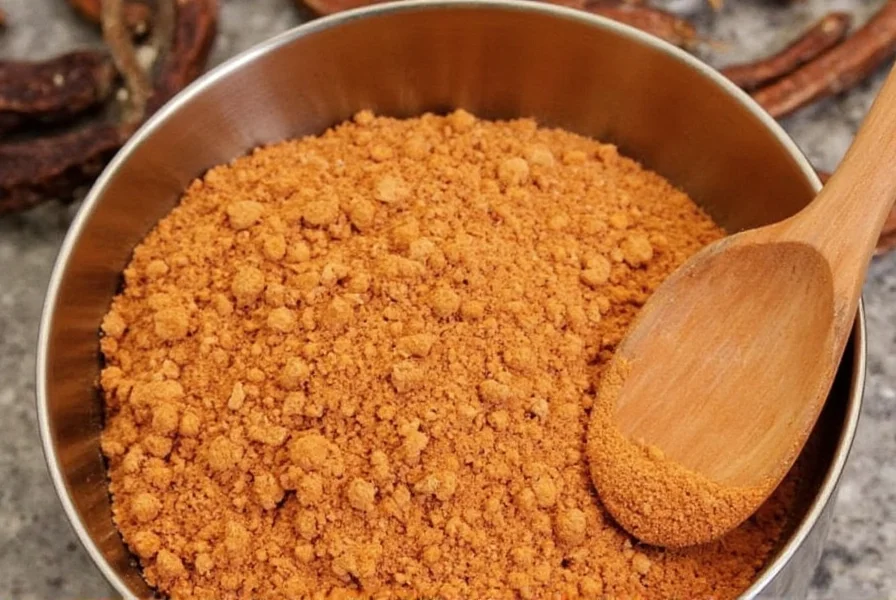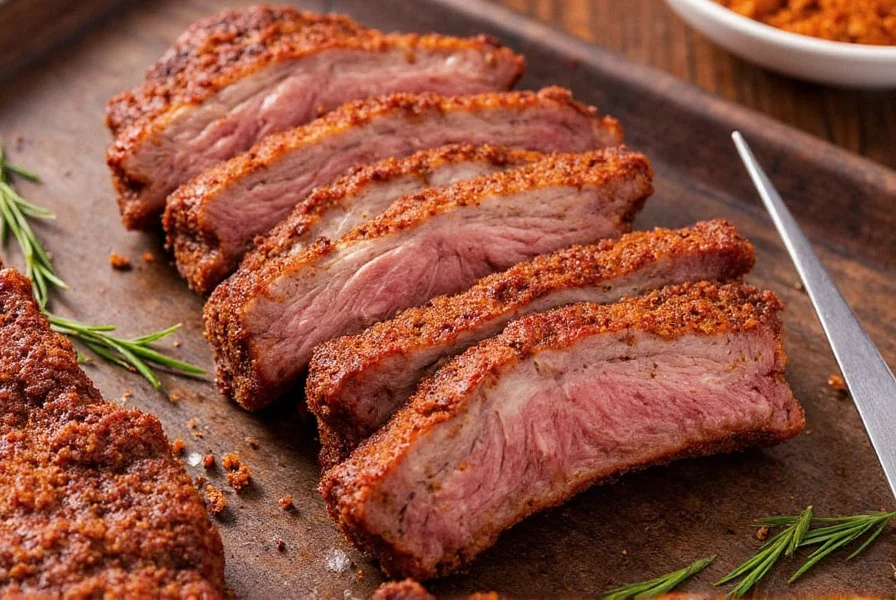Here's a simple and delicious dry rib rub recipe you can make at home with common ingredients for perfect ribs:
- 1/4 cup brown sugar
- 2 tablespoons smoked paprika
- 1 tablespoon kosher salt
- 1 tablespoon black pepper
- 1 teaspoon garlic powder
- 1 teaspoon onion powder
- 1/2 teaspoon cayenne pepper (adjust for heat)
Mix all ingredients in a bowl. Apply generously to ribs, let rest for 1-24 hours, then cook. This recipe makes about 1/2 cup of rub for 2-3 racks of ribs.
Why Use a Dry Rub Instead of Sauce?
Dry rubs are favored by many BBQ enthusiasts because:
- They build flavor from the inside out, not just coating the surface.
- They create that coveted bark, which adds texture and depth.
- They're customizable — tweak ratios and ingredients to suit your taste.
- They're low-maintenance — no marinating overnight required!
| Flavor Profile | Common Ingredients | Purpose |
|---|---|---|
| Salty | Kosher salt, sea salt, celery salt | Enhances flavor and draws moisture |
| Sweet | Brown sugar, molasses powder, honey granules | Caramelizes for color and crust |
| Spicy | Black pepper, chili powder, cayenne, paprika | Adds heat and complexity |
| Umami/Earthy | Garlic powder, onion powder, mustard powder, smoked paprika | Boosts savory depth |
7 Sizzling Secrets for the Perfect Dry Rib Rub
Ready to take your rub game to the next level? Here are seven expert-approved secrets that will make your ribs sing:
- Rub It In (Literally): Press the rub firmly into the meat so it sticks and begins to penetrate.
- Time Is Flavor: Letting the rub rest on the meat for at least an hour (or even overnight) builds deeper flavor.
- Balance Sweet and Heat: Too much sugar burns; too little leaves it flat. Aim for a 3:1 ratio of brown sugar to spice blend.
- Don't Skimp on Salt: Salt is the foundation. It pulls moisture, dissolves some rub components, and enhances everything else.
- Add Smoked Elements: Smoked paprika or chipotle powder gives a hint of the grill without needing hours of smoke time.
- Mix Texture for Interest: Combine fine powders with coarser elements (like crushed black pepper or flaked sea salt) for more dimension.
- Taste Test First: Always sample a small amount of the rub before applying it to ensure balance.
How to Apply Your Dry Rib Rub Like a Pro
Applying dry rub might seem straightforward, but there's definitely an art to it. Here's how to do it right:
- Pat Dry First: Moisture repels spices. Wipe the ribs with paper towels before applying.
- Apply Generously: Don't be shy — cover every inch, especially bone ends and corners where flavor tends to hide.
- Press It In: Gently press the rub into the meat with your fingertips for better adhesion.
- Rest It: Refrigerate uncovered for 1–24 hours to allow flavors to meld.
Storing and Shelf Life Tips
Homemade rubs can last up to six months if stored properly. Here's how:
- Use airtight containers — glass jars with tight lids work best.
- Store away from heat, light, and humidity (your pantry is perfect).
- Label each jar with the date and recipe name.

| Product Name | Features | Advantages | Best For | Occasions |
|---|---|---|---|---|
| **Sweet Baby Ray's Barbecue Rub** | Brown sugar base, garlic & paprika | Perfectly balanced sweet & smoky | Beginners & families | Weekend grilling, backyard parties |
| **Riceland Southern Style BBQ Rub** | Smoky paprika, coarse black pepper | Deep Southern flavor, great bark formation | BBQ competitions, smokers | Slow-smoked ribs, contests |
| **Traeger Pork & Poultry Rub** | Hickory-smoked, slightly tangy | Designed for pellet grills | Traeger users, wood-fired lovers | Cold weather cookouts, tailgating |
| **Tony Cachere's Cajun Style Rub** | Hotter profile with peppers & garlic | Exciting kick for adventurous eaters | Spice lovers, Louisiana-style fans | Festival cooking, spicy food challenges |
| **Penzey's Smoky Texas Rub** | Heavy on smoked paprika, coarse salt | Great crust-building potential | Traditionalists, steak & rib lovers | Competitions, gourmet meals |

Frequently Asked Questions About Dry Rib Rub
How long should I leave dry rub on ribs before cooking?
For optimal flavor, let the dry rub rest on ribs for at least 1 hour at room temperature or ideally 12-24 hours in the refrigerator. This allows the salt to penetrate the meat and the flavors to meld. However, even 15-30 minutes will make a difference if you're short on time.
Should I use a dry rub under BBQ sauce?
Yes! Applying a dry rub before sauce creates layered flavors. The rub forms a flavorful crust (bark) that the sauce can adhere to, preventing it from just sliding off. Many pitmasters apply the rub, cook until bark forms, then add sauce during the last 30-60 minutes of cooking.
Can I use dry rub on meats other than ribs?
Absolutely! Dry rubs work wonderfully on pork shoulder, chicken, brisket, and even vegetables. While some rubs are specifically formulated for certain meats, most versatile dry rubs can be used across various proteins with excellent results.
Why does my dry rub burn during cooking?
Sugar-based rubs can burn if exposed to high heat. To prevent burning: 1) Keep your smoker/grill temperature below 275°F, 2) Don't apply too thickly (especially on sugar-heavy rubs), 3) Consider reducing sugar content in your rub if burning persists. Some pitmasters wrap ribs in foil (the "Texas crutch") during part of cooking to prevent burning.
How much dry rub should I use per pound of ribs?
A general guideline is 1 tablespoon of dry rub per pound of meat. For a full rack of ribs (about 3-4 pounds), use 3-4 tablespoons. The key is to cover all surfaces evenly without creating thick clumps. Remember, you can always add more, but you can't take it off!
Can I make my dry rub sugar-free?
Yes, though you'll need to compensate for the missing caramelization and flavor balance. Replace sugar with alternatives like coconut sugar (lower glycemic index), erythritol (sugar alcohol), or simply increase savory components. Note that without sugar, you won't get the same level of bark formation, but you can still achieve great flavor with adjustments.
Final Thoughts
Whether you prefer to whip up your own custom blends or go for a trusted brand off the shelf, one thing's clear: a solid dry rib rub is your secret weapon for flavorful, fall-off-the-bone ribs. With a little practice and a pinch of creativity, you'll be serving up barbecue that makes your guests wonder if you've been taking lessons from the pros.
So fire up that smoker, grab your favorite rub, and get ready to impress — one smoky, salty, sweet bite at a time. 🍗✨










 浙公网安备
33010002000092号
浙公网安备
33010002000092号 浙B2-20120091-4
浙B2-20120091-4